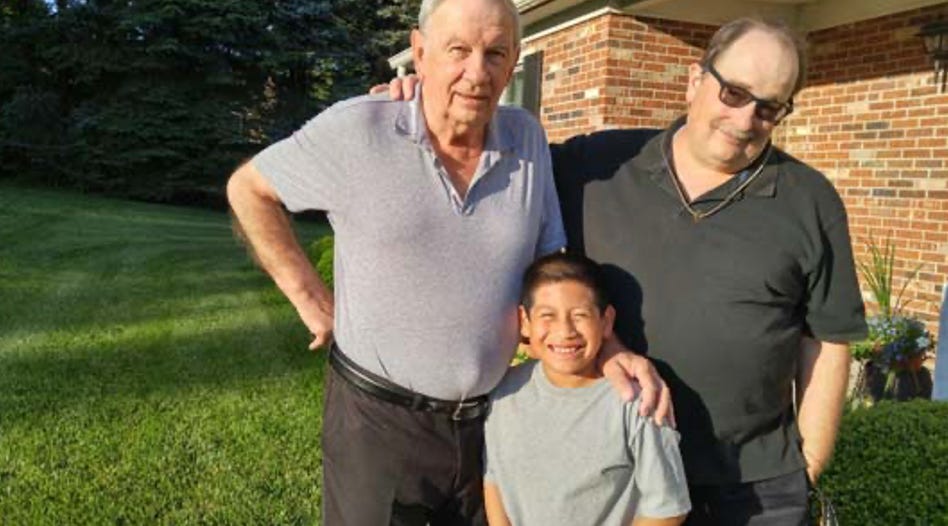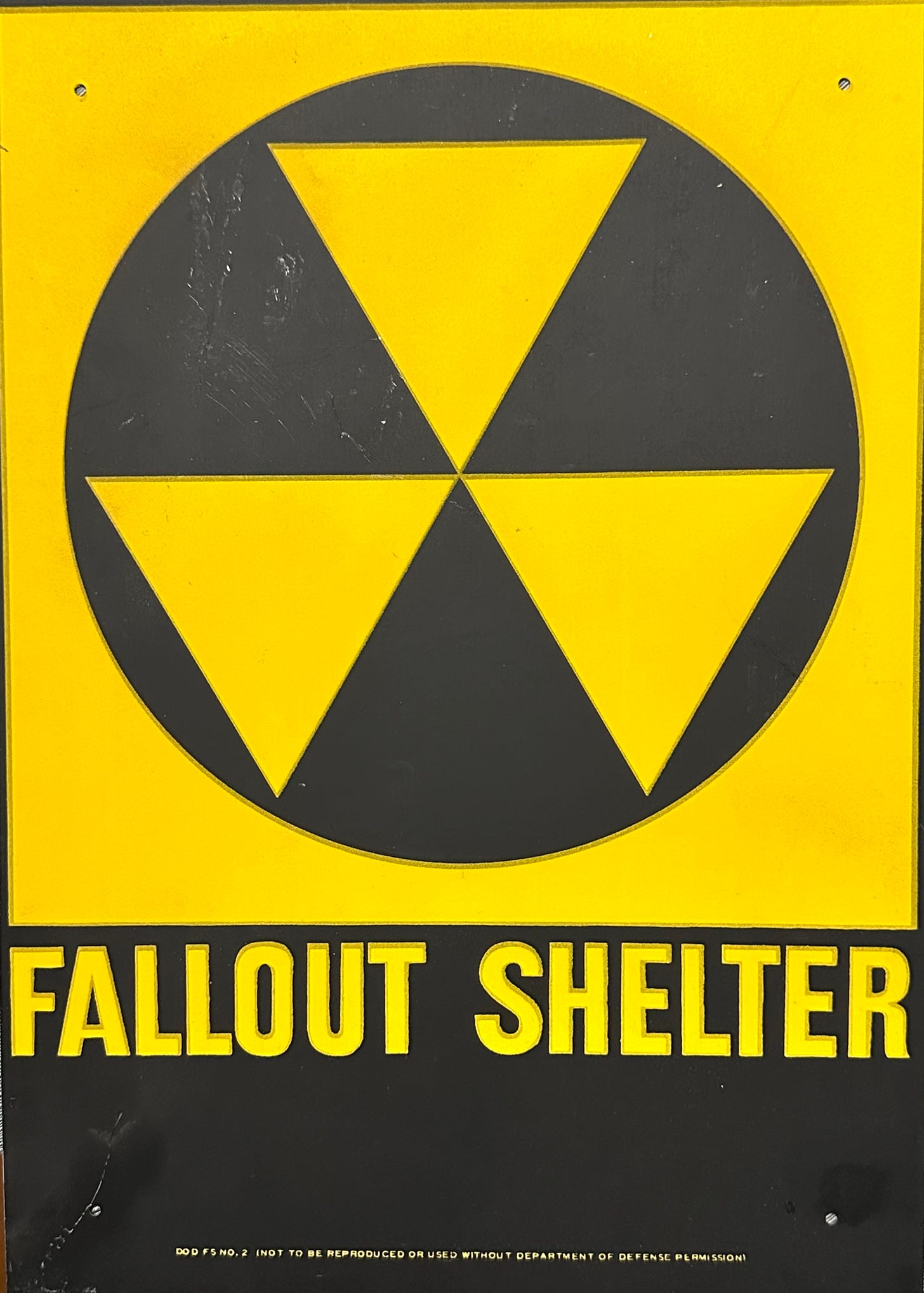My Dad, William Patalon Jr., was a modern “renaissance man.”
He played six or seven instruments, including the bass horn, violin and bass fiddle. And his band’s Madison Square Garden TV performance won the national championship in the 1954 version of America’s Got Talent.
Dad kept the family cars running. He could weld, do electrical and plumbing work — put up a building … and then craft the cabinetry inside.
He was a terrific father. And we were close – real close. We shared hobbies … like model rockets and gas-powered model planes. We restored old cars and drag-raced more modern ones. And we took lots of trips … to air shows, battlefields and other historic sites and aviation museums.
This great man was also a great engineer. He earned two physics degrees. And he spent the bulk of his 55-year career as a defense contractor, mostly during the last three decades of the Cold War.
In the early and middle 1960s, Dad helped design aircraft at Hamilton Standard and Pratt & Whitney. From the early ‘70s through the middle 2010s, he worked on some pretty cool projects for Adm. Hyman Rickover’s “nuclear navy” with Westinghouse Electric and Northrop Grumman Corp. NOC 0.00%↑.
In the “nature and nurture” debate, experts argue over how much we’re shaped by the environment we grew up in. My Dad’s folks (my paternal grandparents) absolutely were shaped by the Great Depression. My Dad absolutely was a product of the Cold War.
And, by extension, so am I.
That’s a good thing … for you.
My personal backdrop – and experiences I’ve tacked on as a reporter and analyst during my own 40-year (and counting) career – means I’m one of the best “guides” to help you folks understand, navigate and capitalize on one of the biggest investing “storylines” unfolding right now.
It’s a storyline I refer to as “The New Cold War.”
It joins the “AI Era” … “Inflation and the Income Trap” … the “Next Chapter for Biotech Blockbusters” … and others … as big wealth-building storylines we’ll be following for you here at Stock Picker’s Corner (SPC).
And we’ll use today’s report and — as well as the crucial “Part II” — to give you the “blueprint” for what comes next.
“My Father’s Son”
As the son of an engineer and defense contractor — and a guy steeped in the technologies, close calls and victories of the Cold War Era — I guess it’s no surprise that big slices of my newspaper and stock-picking career bulls-eyed the aerospace/defense sector.
I followed, analyzed and wrote about companies like The Boeing Co. BA 0.00%↑, Northrop, Harris RF Communications, Westinghouse, AeroVironment Inc. AVA 0.00%↑, Aerojet Rocketydyne, BMY-Combat Systems, United Technologies, Lockheed Martin Corp. LMT 0.00%↑, Kratos Defense & Security Solutions Inc. KTOS 0.00%↑, Raytheon Corp. RTX 0.00%↑ and more.
I sailed with U.S. Naval Academy “middies” on a Chesapeake Bay training cruise that took us from Annapolis to Havre de Grace. I interviewed Northrop test pilot Paul Metz about the YF-23 Advanced Tactical Fighter (ATF). I wrote about an experimental digital camera system that Harris Corp. and the U.S. Air Force tested in the first Gulf War. And I attended field demos of other new “systems.”
I was one of the first in financial publishing to write about, analyze and really understand crucial new storylines about the militarization of the South China Sea, the hypersonic weapons threat and the global “drones” revolution – each of them now regular headline makers.
All of this built on what I saw … what I experienced … what I felt … growing up as “my father’s son.”
I read voraciously … knew I wanted to be a reporter … and tuned into shortwave-radio broadcasts from Russia, China, Romania, Vietnam, England, Cuba, Czechoslovakia and Japan, meaning I got a generous helping of non-U.S. viewpoints.
The one “constant” was that “always there” nuclear threat.
It’s the storyline that defined the Cold War era. And it’s something I remember … even today.
Real Life Horror Flick
That first Cold War lasted from 1947 to 1991. And it earned that “cold” sobriquet because the two chief rivals – the United States and the Soviet Union – never tangled directly.
But the Cold War wasn’t actually “cold.” Oftentimes, it was downright flinty – and the sparks flared into hot spots across the globe.
There were “proxy wars” in places like Korea and Vietnam. There were several “close calls” (including the Cuban Missile Crisis) that we know about. And (you can bet) many that we don’t.
The propaganda (from both sides) had the grinding constancy of a migraine. Or a band of out-of-step drummers.
Throughout history, would-be chroniclers have raced to label each successive conflict as the “war to end all wars.” But through the late 1960s, throughout the 1970s and into the Reagan defense buildup of the 1980s, we were talking about the potential for “war to end all humanity.”
I did my best to take comfort from my Dad’s more-sanguine view. He’d say: “Hey Will (his term of affection for me), things will never get as bad as we fear they could be.” It might seem a surprising philosophy for a man who worked in the defense sector. But perhaps not surprising for a man who, as a still-new Dad during the Cuban Missile Crisis, told me he prayed fervently for a good outcome — but still went to work each day because, if the end would come, he wanted to be seen doing his duty for his family and country.
Despite that genetic pedigree, there were times I could not escape or ignore the Cold War’s overhang. It reminded me of the plot of a slow-building horror flick: One where you know the monster is stalking you somewhere out in the murky darkness.
You can’t see it. You can’t hear it. And you don’t know if, where or when it will strike.
That Cold War stretch even had its own “dictionary” – with terms like “MAD” (mutually assured destruction), warhead, fallout shelter, Emergency Broadcast System, Iron Curtain, arms race, SDI (the “other” Star Wars), DEFCON, Warsaw Pact, “Duck-and-Cover” and more.
In my “treasure chest” of career mementos, I still have this Cold War holdover …
A Not-So-Peaceful Dividend
I remember living through the Cold War.
And I also remember when the Cold War “ended.”
It was 1989, I was in my sixth year as a reporter, and I was headed into Washington for an investigative reporters’ conference. The Berlin Wall had fallen. The world was jubilant. I still can see those celebratory stripped-across-the-top headlines that shouted at us from the windows of the newspaper boxes bunched near D.C.’s Union Station.
We soon had to learn an entirely new vocabulary … one for the post-Cold-War world … one containing terms like peace dividend, glasnost, perestroika, strategic arms reduction (START), European Union and more.
But life, as it usually does, has come full circle.
With the Cold War’s end, we beat those swords into plowshares.
And now we’re beating those plowshares back into swords — though today’s rapiers are AI-augmented, with advance-composite scabbards, “smart” blades and hypersonic thrusting power.
Yes, folks: The Cold War is back. Some academics are calling it Cold War 2. But I prefer New Cold War – and that term is catching on.
The New Cold War is birthing a wholly new “dictionary” – one you need to learn as it’s published. We’ll see new threats to our families, our economy, our families, our savings and our comfortable way of life. New threats are always accompanied by new opportunities … some intriguing, some exciting and some either scary our downright terrifying … but all worth exploring.
And with what I learned the first time through, I believe the team here at Stock Picker’s Corner (SPC) are the right folks to light the way … for you.
And we’ll continue that trek in Part II of this detailed look at the New Cold War … the all-important “what comes next” assessment.
See you then …











AI is one of the technologies defining -- and dimensionalizing -- the New Cold War.
And here's a look at how AI technology is changing the face of warfare.
https://open.substack.com/pub/stockpickerscorner/p/its-the-first-ai-war-and-its-silently?r=3ftiph&utm_campaign=post&utm_medium=web